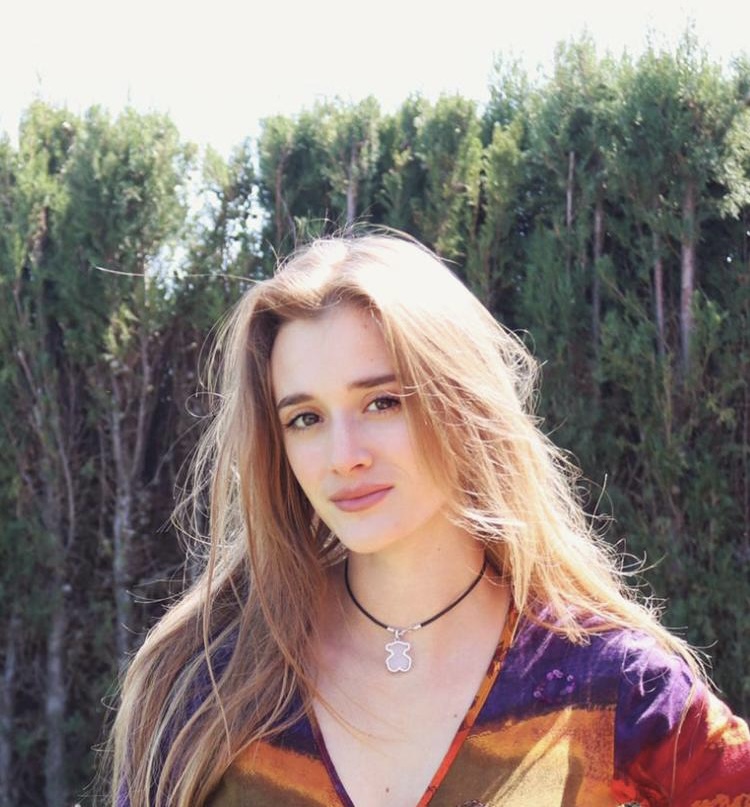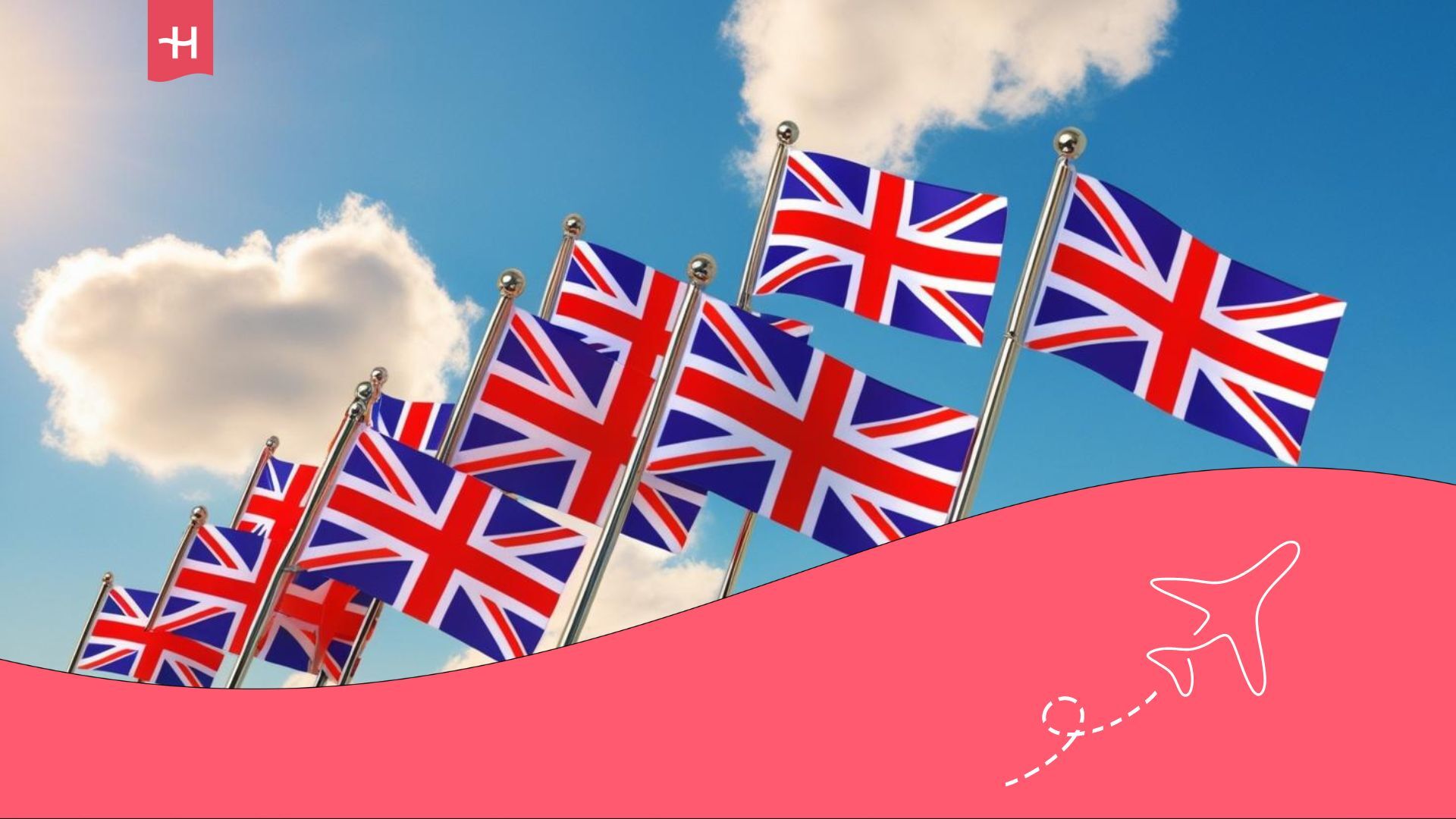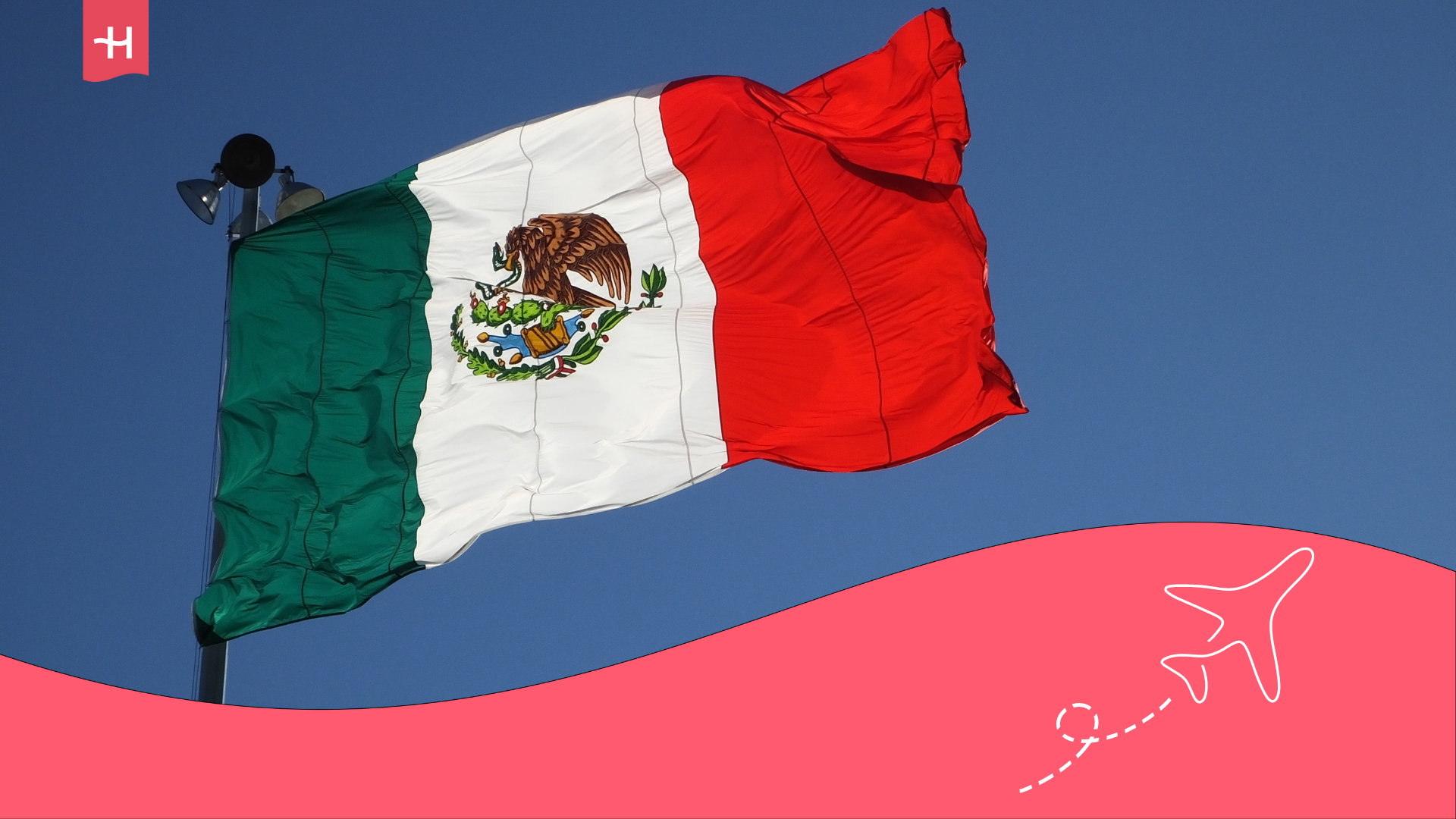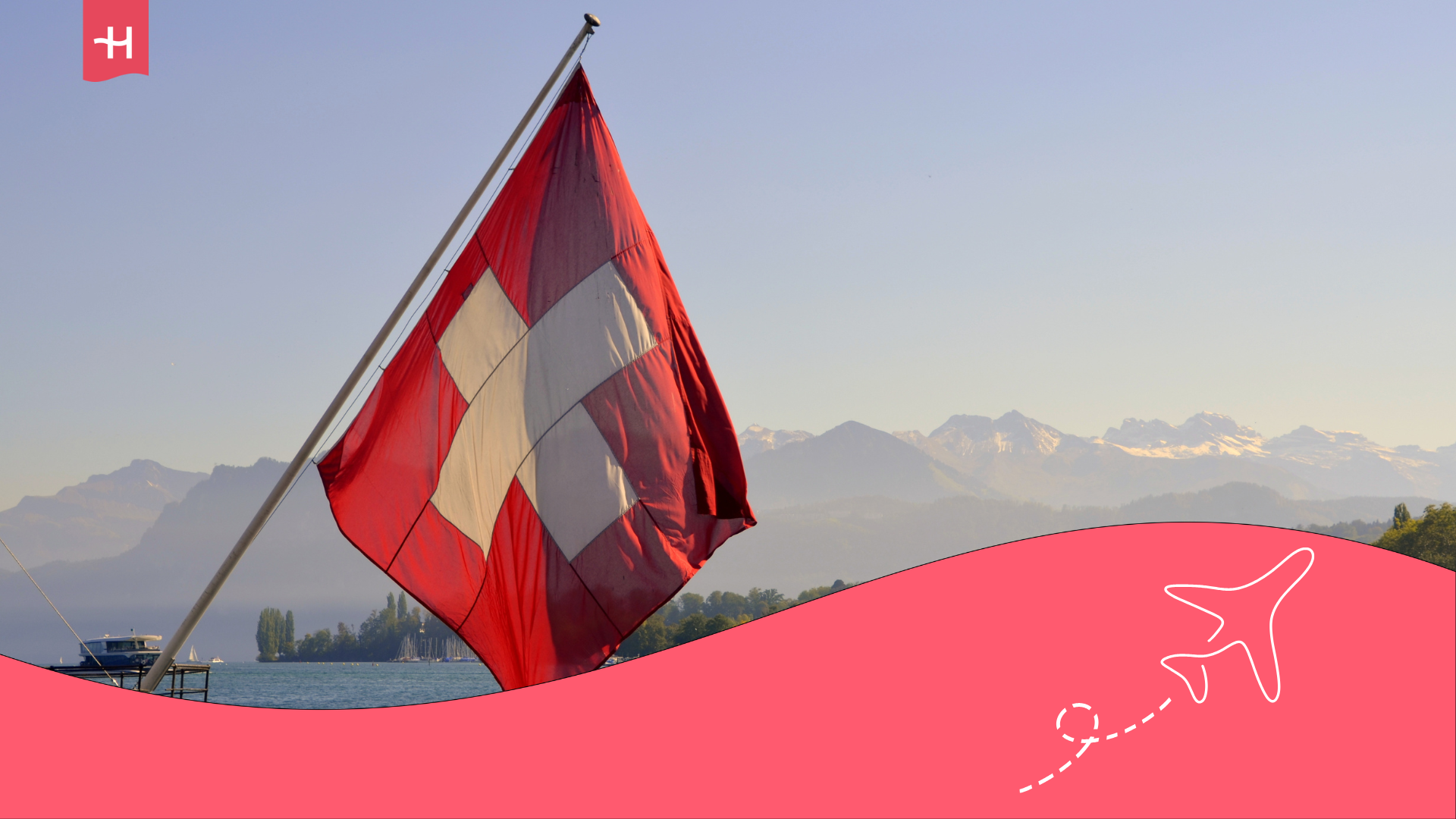Accommodation in Nusa Penida for long-term stays as a digital nomad
Located near Bali, this Indonesian island offers a different pace of life. However, knowing where to stay in Nusa Penida is key to making the most of your visit.
Nusa Penida isn’t a place you arrive at, check in, and move on. This destination captures you with its raw energy, endless cliffs, and tranquillity, perfect for inspiration and bringing ideas to life. So, if you seek a remote corner to work, write, reconnect, or simply live differently for a while, this Indonesian island could be that place. Of course: To have a good experience, knowing well accommodation for long-term stays in Nusa Penida for a long stay is not a detail to overlook.
Before going further, let’s help you locate it on the map, because it might be your first time hearing about this destination. Nusa Penida is one of many islands that make up Indonesia. It lies just 40 minutes by boat from the famous Bali, yet it lacks the same infrastructure. But that’s part of its charm: here you won’t find supermarkets or air-conditioned cafés, but you will find beachfront bungalows, hills with impossible views, sustainable lodgings, and a growing community of remote workers.
In this guide, we’ll see the best areas to settle for a season in Nusa Penida, including which type of accommodation suits different profiles. The idea is that by the end, you’ll find your spot in this wild gem of the Indonesian archipelago.
Where to live in Nusa Penida? The best long-stay accommodations
Those who choose to live in Nusa Penida seek simplicity and life in nature: Sea, mountains, connection (hopefully with WiFi too) and a kind of silence you won’t find in cities. Here you won’t see buildings, large hotel chains, or the coworking spaces cities have. If that’s what you need, returning to Bali might suit you better. But if you want (or need) to settle in a place with different energy, with a routine adapted to the sun, Nusa Penida will offer this and more.
The good news is that living in Nusa Penida for a season is completely possible, but not like in other destinations. You’ll need to look beyond booking platforms, walk along dirt roads, talk to locals, and let the accommodation find you. Don’t worry, here’s a compass:
Family bungalows and guesthouses
The most authentic and common way to stay in Nusa Penida for a season is in a local bungalow or guesthouse. Most are run by island families, and although the design may be rustic, the treatment is usually warm, direct, and flexible.
Many accommodations don’t appear on Airbnb or Booking, but can be found via recommendations or talking directly to owners once there. We suggest searching in areas like Toyapakeh, Sakti, Ped, Kutampi, or elevated spots with sea views. They often include breakfast, weekly cleaning, and a motorbike. Most importantly: A constant smile and help with everything.
Prices are generally very affordable, though they vary depending on included services. A private room with a bathroom can range from €200 ($220) to €350 ($385)/month, while an independent bungalow costs between €400 ($440) and €600 ($660)/month, with basic WiFi and hot water.
Villas and Monthly Rental Houses
If you prefer more space, privacy, and panoramic views, there are a few villas available for monthly rental. There aren’t many, but they do exist. Some are designed for long-term travellers, especially near Crystal Bay or in the hills of Ped.
They come with fully equipped kitchens, terraces with hammocks, WiFi (sometimes with their own router), and plenty of independence. They’re not always online, but you can find them by walking around or searching in Facebook groups like “Nusa Penida Long Term Rentals”.
Estimated costs are slightly higher than the previous options, though still much more affordable than in Bali’s more touristy areas. One-bedroom houses range from €500 ($550) to €800 ($880)/month, while a complete villa with kitchen and sea views can go from €900 ($990) to €1,200 ($1,320)/month.
Accommodations for Digital Nomads and Remote Workers
Nusa Penida doesn’t have coliving spaces as such (i.e. places with accommodation, coworking, events, and a tech community), but it does have some eco-lodges, surf camps, and silent retreats that accept long stays and, in practice, function as tropical colivings.
For example, La Roja Bungalows (Ped) is a simple but well-maintained complex, located just a two-minute walk from Batununggul Rastafara beach. It stands out for its youthful atmosphere, with equipped rooms, WiFi, a shared kitchen, an outdoor pool, and a garden. It’s not uncommon to find travellers who came for “just a week” and have stayed for months, sharing a kitchen, workspace, and evening walks.
Another space of this type is The Mesare Resort (inland), an eco-lodge with a slow mindset, yoga, healthy food, and green silence, ideal for disconnecting and reconnecting. Or, there’s Nuansa Penida Hostel & Dive, a mix of hostel and diving centre, with a shared kitchen and communal areas. For those wanting to explore Indonesia’s incredible underwater world in their spare time, this could definitely be a great place to stay in Nusa Penida. You can find these three options on Booking.
Prices vary depending on accommodation category, location, and services offered. But, as a reference, a shared room can cost around €300 ($350), while a private bungalow with full board is around €900 ($1,050)/month.
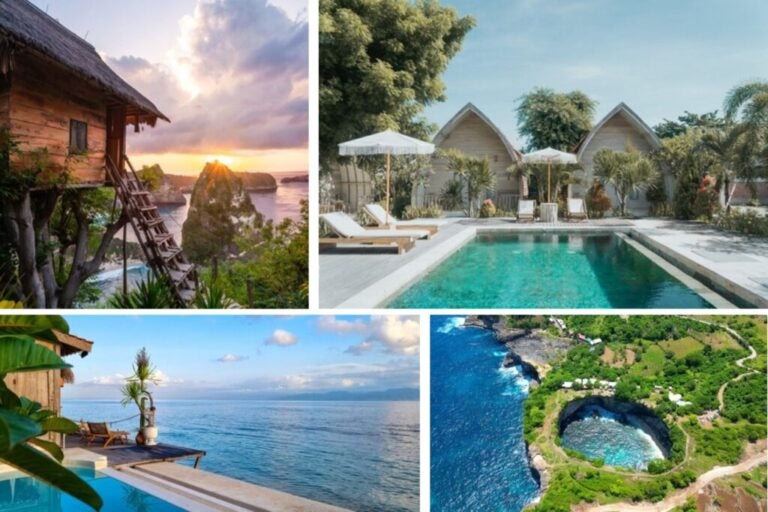
Traditional Balinese Homestays
If you want to live like a local, traditional homestays are the best option. These are usually buildings within the family’s property, with a Hindu altar at the centre and simple but clean rooms. Some include rituals, others meals, and all give you a chance to experience island life from the inside. Without a doubt, they can be the most original option for staying in Nusa Penida.
But beware, they’re not for everyone: There may be animals wandering around, incense smells, and prayers at dawn. On the plus side, prices are affordable and are usually negotiable (and typically paid in cash, so forget about using a credit card). As a reference, staying in a traditional Balinese house can cost between €150 ($165) and €300 ($330) per month, though it all depends on the deal you make with the owner.
Hotels: Another Option for Staying in Nusa Penida
By now, you might be wondering if there are hotels in Nusa Penida. Well, yes, there are. While the options aren’t as abundant as in Bali or Lombok, there are a few for travellers looking for comfort, included services, and a hassle-free experience with things like cleaning or cooking. However, don’t expect international chains or towering buildings: Here, the hotels are more like villas with pools, cabins with daily service, or family-run eco-resorts.
Many are built on the side of a hill, with sea views, and offer breakfast with freshly cut fruit. And, if you ask at reception with a smile and a desire to stay for a month, it’s very likely you’ll get a much more affordable monthly rate than the daily price multiplied by 30.
So, prices are negotiable, but can range from €700 ($770) to €1,200 ($1,320)/month, depending on the season, services included, and location.
What’s the Internet Like in Nusa Penida?
Let’s be clear: WiFi in Nusa Penida is a lottery. You might get an acceptable signal by the sea or your video call might cut out just when you’re sharing your screen. Some guesthouses have their own routers, others barely work with the owner’s hotspot. And if you plan on moving between rural areas, you better not rely on a fixed network.
That’s why, if you’re going to work remotely, you need a backup plan from day one. The Holafly monthly plans are your best option for that. With a single eSIM, you’ll have mobile data in Indonesia (and 175 other countries) without changing your SIM card or worrying about roaming. It works as soon as you land, has coverage throughout the country (including Nusa Penida), and allows you to share the internet with your computer or tablet.
For shorter stays, under one month, the Holafly eSim for Indonesia offers unlimited data for the days you need internet in Nusa Penida.
Important: If you are a frequent traveler and want to stay connected without worrying about expensive roaming or looking for a new SIM at every destination, Holafly’s subscription plans are for you. With a single eSIM, enjoy internet in more than 160 countries for a fixed price and no surprises on your bill. Travel without limits and connect easily and securely! 🚀🌍

What Are the Best Areas to Stay in Nusa Penida?
Nusa Penida doesn’t have neighbourhoods. It has dirt roads, green hills, rugged coastlines, and local communities that are slowly growing. When choosing where to stay for a season, the key isn’t just the map, but the pace of life you want to follow. Close to the port? With a sea view? On a hillside surrounded by jungle? Each area has its own vibe. That’s why, here, we share the most recommended ones for long stays.
Ped: The Best Area for Digital Nomads in Nusa Penida
If there’s a place on the island that can be considered ideal for digital nomads, it’s Ped. Located between the Toyapakeh harbour and the east coast, Ped is the area with the most WiFi cafés, well-located accommodations, small shops, and people who already understand that in Nusa Penida, living slowly doesn’t mean being disconnected from the world.
Here, you can walk to the beach, which, while not as famous as others, invites you to snorkel and watch the sunset with your feet in the water; find local food for just a few euros, rent a motorbike in 10 minutes, and meet other long-term travellers who, like you, came for a short stay but ended up staying much longer.
If you want to explore Balinese culture in your spare time, we recommend visiting the Dalem Ped Temple, one of the most sacred spots in Nusa Penida, frequented by both locals and pilgrims. You can also join a tour to Crystal Bay, Gamat Bay, or Manta Point, as there are plenty of tour agencies in the area.
Accommodations in Ped:
- La Roja Bungalows: We’ve already told you about this accommodation (similar to a coliving), which includes a pool, garden, a communal workspace, and private tropical-style rooms. From €750 ($825)/month with discounts for long stays.
- Puri Nusa Indah: A simple guesthouse by the sea, with rooms featuring private bathrooms, WiFi, and the possibility to negotiate a monthly rate directly. From €350 ($930)/month.
- Ocean Terrace Suites: A hotel with equipped rooms, a private terrace, sea views, and breakfast included. From €950 ($1,045)/month if you book for 30 days or more.
- Local Family Homestay (in a street parallel to the main one): A room with a bathroom, fan, access to the kitchen, and direct interaction with the owners. From €200 ($220)/month, negotiated face-to-face and paid in cash.
Toyapakeh: The Arrival (and Departure) Point to Nusa Penida
Toyapakeh is the gateway to the island. It’s where boats from Bali arrive, goods are transported, fuel is loaded, and where the adventure begins for many. But beyond the comings and goings, Toyapakeh has a life of its own: Markets, warungs (local eateries), small temples, pharmacies, and a constant energy that blends the local and the traveller vibe.
That’s why, if you’re looking for convenience, nearby services, and not to rely too much on the motorbike, this area is ideal. From here, it’s easy to move to other parts of the island or cross back to Bali at any time. Plus, you can quickly reach Gamat Bay, one of the island’s most beautiful and peaceful beaches (perfect for unwinding after work or enjoying a weekend getaway).
Traveller tip: Do you enjoy diving? Here, you’ll find Toyapakeh Wall and Channel, two popular spots for diving and snorkelling, and with a bit of luck, you might spot giant manta rays.
Accommodations in Toyapakeh:
- Semabu Hills Hotel: Located on a hilltop, it offers spacious rooms, an infinity pool, and a serene environment, just 5 minutes from the harbour. Monthly rates from €1,100 ($1,210)/month with breakfast included.
- Dwi Manunggal Bungalows: Simple yet well-maintained bungalows, with a terrace, air conditioning, and decent WiFi. From €400 ($440)/month with weekly cleaning.
- Homestay Ketut (behind the port): Basic accommodation with a private bathroom, family-style service, and the option to include a motorbike in the price. From €250 ($275)/month if booked directly in person.
- Nuansa Penida Hostel & Dive: Another accommodation we’ve already recommended, ideal for sociable travellers and diving enthusiasts, with shared or private rooms, a communal kitchen, and lounge area. From €300 ($330)/month for a shared room.
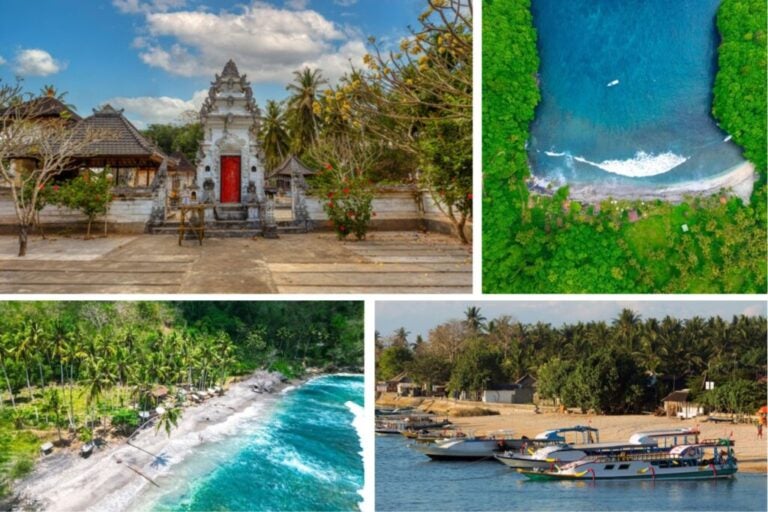
Sakti: Staying in Nusa Penida on Top of a Cliff
Sakti is where the island shows its most impressive and wild side. There are no supermarkets or fancy cafés, but you will find breathtaking cliffs, paths between banana trees, villages with free-range chickens, and terraces with direct views to the infinite. It’s an ideal area if you want to live near Nusa Penida’s main natural landmarks, with a more secluded and profound environment.
Just a few minutes by motorbike, you’ll reach Kelingking Beach, probably the island’s most famous view (and one of Indonesia’s most photographed spots). There are also the natural formations of Broken Beach and Angel’s Billabong, which you can access directly, as well as Paluang Cliff, a much less crowded panoramic spot, perfect for watching the sunset.
Accommodations in Sakti:
- Daphila Cottage: Located on a hilltop with views of the bay, a pool, restaurant, and negotiable long-term rates. From €850 ($935)/month with breakfast included.
- The Mesare Resort: An eco-lodge surrounded by jungle, bungalow-style rooms with private terraces, healthy food, yoga classes, and half-board option. From €900 ($930)/month.
- Homestay Ayu (mid-Sakti area): A family home with two available rooms, private bathroom, shared kitchen, and the option to rent a motorbike. From €280 ($310)/month negotiated directly.
- Villa Nusa Permai: A private house with a kitchen, two rooms, and a balcony with views of the west coast. Perfect for sharing or for those seeking absolute silence. From €1,000 ($930)/month.
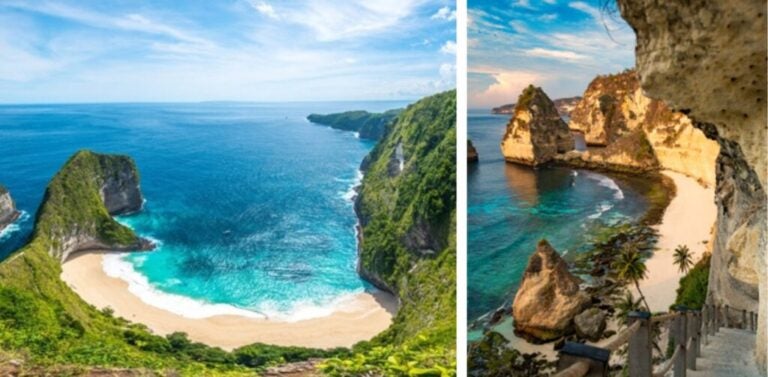
Kutampi and Surroundings
If Nusa Penida had an administrative centre, it would be Kutampi. It’s not an area for selfies or cliffs, but it’s where the real daily life of the island happens: There are banks, clinics, schools, hardware stores, markets, and the best warungs where locals have lunch for less than €2 ($2.50). This is where the island lives without filters and without hurry.
So, Kutampi is ideal if you want a functional base for a long stay, away from the tourist circuit, with services at your fingertips and lower prices, but still close enough to everything so you can ride a motorbike to the coast or panoramic spots.
In your free time or on weekends, you can visit Goa Giri Putri Temple, located inside a giant cave and accessible by crouching through a crack in the rock. It’s one of the most impressive temples on the island, so don’t miss it. There’s also Suana Beach, small, local, and uncrowded, perfect for quiet afternoons and sunsets without crowds.
Accommodations in Kutampi:
- Lembo Hillview: Basic but clean rooms, with a garden, fan, and breakfast included. Ideal for budget stays. From €250 ($330)/month.
- Kutampi Guesthouse: Rooms with a private bathroom, WiFi, weekly cleaning, and hot water (not so common on the island!). Price negotiated directly with the host. From €300 ($350)/month.
- Homestay Merta: Run by a local family, includes access to a kitchen, communal terrace, and guaranteed good vibes. From €200-230 ($220-$255)/month if booked in person.
- Villa Kutampi View: A private house for those looking for more space, equipped with a kitchen, lounge area, and views of the greenery, just 10 minutes from the sea. From €800 ($930)/month.
Where to stay in Crete: Frequently asked questions
It depends on where you are… and the day. In areas such as Ped, Toyapakeh and parts of Kutampi, the signal is fairly stable. In higher or more remote areas, such as Sakti or rural areas, there may be outages or slowdowns. That’s why it’s essential to have a mobile data plan and always ask before booking: ‘How is the actual WiFi?’
In Toyapakeh and Kutampi, you will find the most comprehensive services: Mini-markets, pharmacies, laundromats, petrol stations, and ATMs. In areas such as Sakti or Ped, there are warungs, small shops, and fruit stalls, but there is less variety. Tip: Bring anything you think might be difficult to find from Bali (tech items, specific health products, your favourite snacks).
Yes, there are local clinics in Kutampi and Toyapakeh that deal with basic emergencies, and some doctors who make house calls. But if it’s something more complex, the usual thing is to return to Bali by speedboat. It’s also advisable to have international medical insurance.
Living without a motorbike in Nusa Penida is far from practical. Distances on the island are long, the roads are steep, and public transport is almost non-existent. Most people rent a motorbike by the month (from €60-90, $70-105) or share a vehicle with other travellers. Some accommodations even include a motorbike in the price.
Quiet, warm, with sunshine in the morning and starry skies at night. There, days are organised according to the weather, the tides and your mood. You live with just enough, but with everything you need. If you’re looking for community, you’ll find it, and the same if you prefer to be alone. In conclusion, if you are looking for a balance between work, nature and a simpler lifestyle… you will probably find it difficult to return home.





 Language
Language 


















 No results found
No results found



